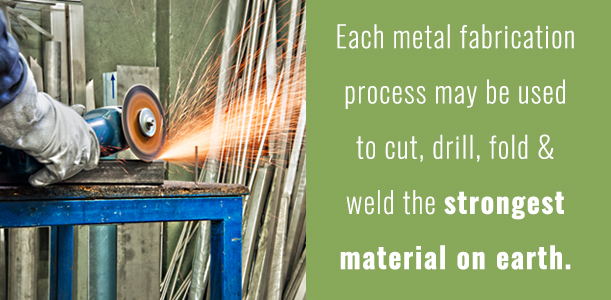6 Simple Techniques For Steel Fabrication Apprenticeship
Wiki Article
Steel Fabrication Near Me Fundamentals Explained
Table of ContentsWhat Does Steel Fabrication And Welding Do?Not known Incorrect Statements About Fabricated Steel Angle Steel Fabrication Apprenticeship - QuestionsThe 45-Second Trick For Fabrication Steel ChartSteel Fabrication Process Fundamentals Explained
Machining, Machining is additionally a fairly simple procedure in concept, and also yet there is a variant that can be located in it. By its nature, it is a process of getting rid of excess product from raw metal pieces somehow. 3 of the much more widely known procedures of machining are called milling, transforming, and also exploration.This procedure can be done both with the help of a certain CNC milling machine as well as by hand, and milling, in basic, is more frequently an additional process than not. Some variations of milling can be simple milling, climb milling, kind milling, angular milling, and more. Turning is one more variation of machining that makes use of a particularly designed device turret to produce a cylindrical-shaped item by using a cutting device to get rid of components of a raw metal piece that turns in one area.
Drilling is the simplest one out of the three, as well as it's equally as the name recommends it's the combination of a drill as well as a rotating cutting device used to reduce holes in the raw metal piece. fabricated steel angle. Shearing, Shearing is technically a variation of cutting, but it's separated into a different category because of its unusual technique to the procedure.
The Ultimate Guide To Steel Fabrication
The cut is begun by using pressure to the steel item with the top component of a maker (formed like a blade), which develops a fracture. By applying nonstop stress to the fractured steel a cut is accomplished, as well as the sheared edges can be burred later (burred as if the process of cleansing up the edges of the material items after the shearing).It is quite a popular approach, mainly as a result of its versatility it can combine basically any kind of metal parts. There are four kinds of welding that are one of the most prominent: FCAW, MIG/GMAW, SMAW, and also TIG.FCAW or Change Cored Arc Welding uses a wire electrode with a core that produces securing gas, which eliminates the need for an additional gas resource.
It utilizes an outside gas supply in mix with a solid cord electrode to stop the metal item from communicating with various ecological factors, making the procedure faster and a lot more consistent. SMAW or Protected Steel Arc Welding is one of the most fundamental variation of a welding tool, it's an electrode stick that develops an electrical arc when speaking to with metal, as well as the high temperature level of the arc's effect is what welds the steel assemble.
Getting My Steel Fabrication And Welding To Work
It utilizes a tungsten electrode rod that creates short arcs, more ideal for hefty manufacture - fabricated steel angle. It's one of the much more tough variations of welding and also needs a highly-skilled professional to run it effectively, yet it additionally helps most of metal-based products and comes in handy also for the most intricate tasks.This article is an effort to combine several of the extra standard info on the topic in one place, from the meaning of metal fabrication to a myriad of procedures that it can take the type of.
Sheet steel can be defined as any type of sort of metal that is formed right into thin flexible sheets. The sheets vary in material from brass to titanium and also be available in a wide variety of predefined densities, described as a scale. Usually, many sheets are less than inch thick click this site yet can range in density from fractions of a millimeter to numerous inches thick.
Steel Fabrication Meaning - Questions

Historically, it was used in tile roofing, but as manufacturing methods enhanced, sheet metal soon provided an economical and also long lasting product that might be utilized virtually everywhere. It came to be so preferred that suppliers saw a boom up until The second world war when steel materials became so scarce that the sector began to collapse.
Additionally, it is much faster to scale automation as a result of the versatility of fabrication alternatives. Given that it is thin and has a lightweight type element, any type of extra supply needed for manufacturing can be kept as well as delivered quickly. There are loads of means to make sheet metal depending on the application.
Flexing, Sheet metal is placed within a flexing device and also bent to the desired form. The most usual flexing device is called a press brake. The brake utilizes a die and also hydraulic press to inscribe the bend onto the steel. Typically used to form electronics discover here rooms. Marking, A sheet steel blank is put into a marking press where visit their website it is formed into the wanted shape making use of a tool and also die.
Our Fabrication Steel Chart Ideas

This procedure utilizes the use of a high-powered laser to cut products to the preferred form and also size. Compared to various other cutting procedures, it uses higher reducing precision and precision, specifically for complicated and detailed component designs. Machining Machining is a subtractive procedure, meaning it creates components as well as products by removing product from the workpiece.

Report this wiki page